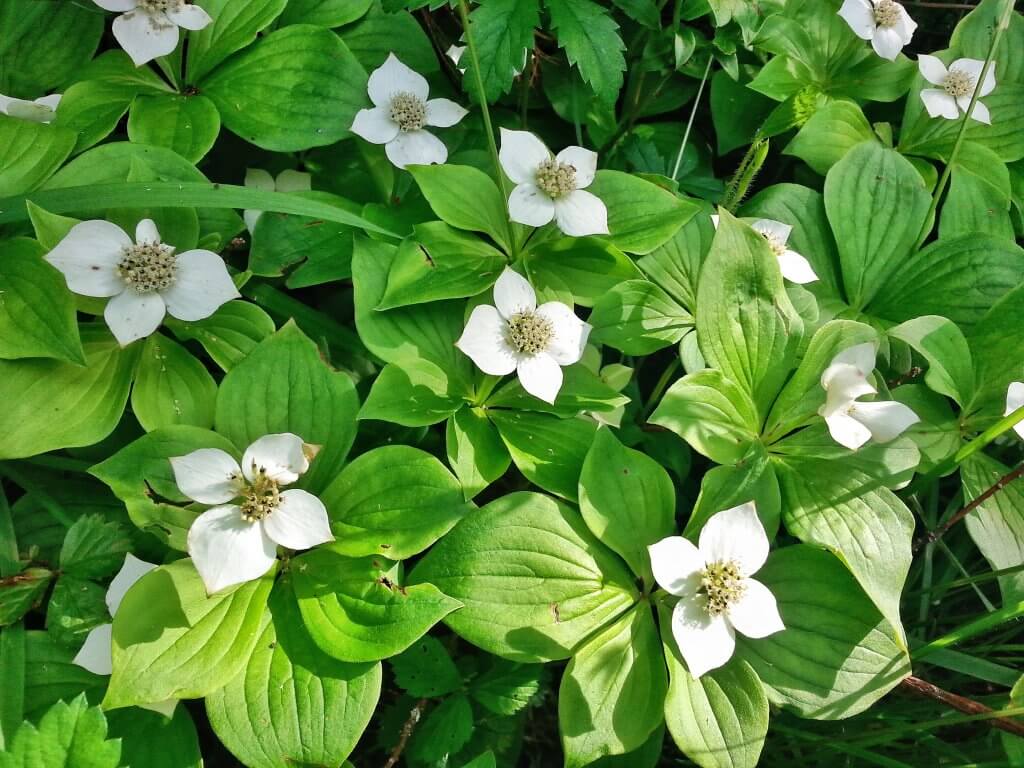

Edibility and culinary use
The fruit of this plant can be eaten raw or cooked. Bunchberries have a slightly sweet flavor. However, they’re quite dry and mealy, so they may not be the best snack when eaten raw. If you want, you can dry them to make bunchberry raisins. These raisins are great as a snack due to its sweeter taste. Additionally, you can also use raw bunchberries to boost the flavor of breakfast cereals and oatmeal.
Bunchberries are also an excellent ingredient for making jams. This is because bunchberries contain a fiber compound called pectin which works as a thickening agent. As a result, you’ll get a sweet jam with perfect consistency and wonderful mouthfeel. Alternatively, you can also use these berries to make pudding, pies, and other sweet desserts.
Health benefits

As mentioned earlier, bunchberries contain pectin. While most people only know pectin for its culinary uses, this compound actually has other benefits. When ingested, pectin can help lower cholesterol and triglyceride levels. Moreover, consuming pectin regularly can also help treat inflammation, diabetes, and GERD. Additionally, scientists believe that consuming pectin regularly can prevent poisoning from heavy metal. You can also use pectin topically to treat mouth ulcers and sore throats. You can do this by mashing the berries and use the juice directly on the ulcer.
Other parts of the bunchberry plant have medicinal benefits as well. Bunchberry leaves and stems can also be consumed as a herbal remedy. This is because they have analgesic and febrifuge properties. Brew the leaves and stems to make an herbal tea. This tea can treat many different ailments, from fevers and coughs to kidney and lung diseases. Lastly, this tea can also be used as an eyewash to treat sore eyes.
Cultivation
Aside from being a wonderful food source, the bunchberry plant can also serve as a unique ground cover plant. With its lush green foliage, snowy white flowers, and bright red fruits, this plant will definitely make your garden look more interesting. It can also attract butterflies to your garden. If you’re interested in cultivating bunchberry, you’re in luck! This plant is easy to cultivate and maintain. However, you’ll need to be patient as bunchberry takes a while to settle down.

Bunchberry thrives in many types of soil, from heavy clay soils to light sandy soils. Bunchberry prefers to grow in partially shaded areas. Remember to water the plant regularly to keep the soil moist.
You should be able to purchase young bunchberry plants from local plant nurseries. Depending on the size of the plant, it may take a few months until you can handle them and transfer them to their permanent positions. If you can’t find young bunchberry plants, you can still grow them from seeds. The seeds are readily available online. However, note that cultivating this plant from seeds will take way longer; germination may take up to 18 months.
Just make sure to prune and weed out the plants regularly once they’re established. Bunchberry plants may be a slow grower, but once it has matured, it will become rampant. If you don’t control their growth, the plants will take over your entire garden. It will also become a fierce competition to other plants in your garden.
Conclusion
Bunchberries can be a great addition to your daily diet. While it may taste a little bland, it’s nutritious and versatile. Experiment with many different bunchberry recipes to find out which one you love the most. Even if you’re not interested in consuming the berries, this plant can still be an excellent addition to your garden. With a lush, carpet-like groundcover that lasts all year long, your garden is guaranteed to look even more beautiful with bunchberry plants.

